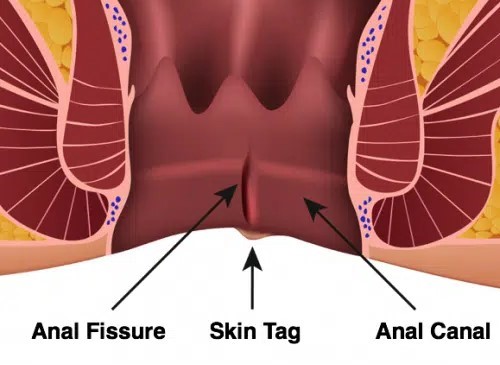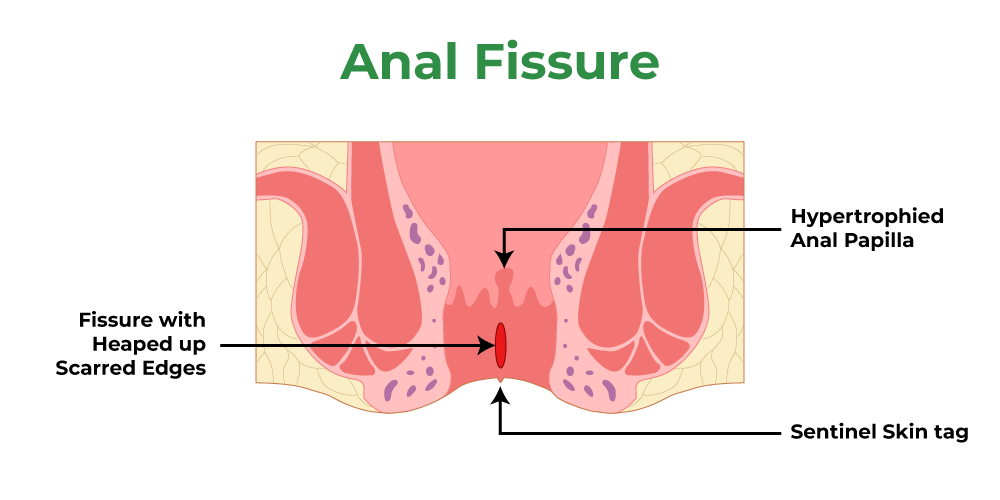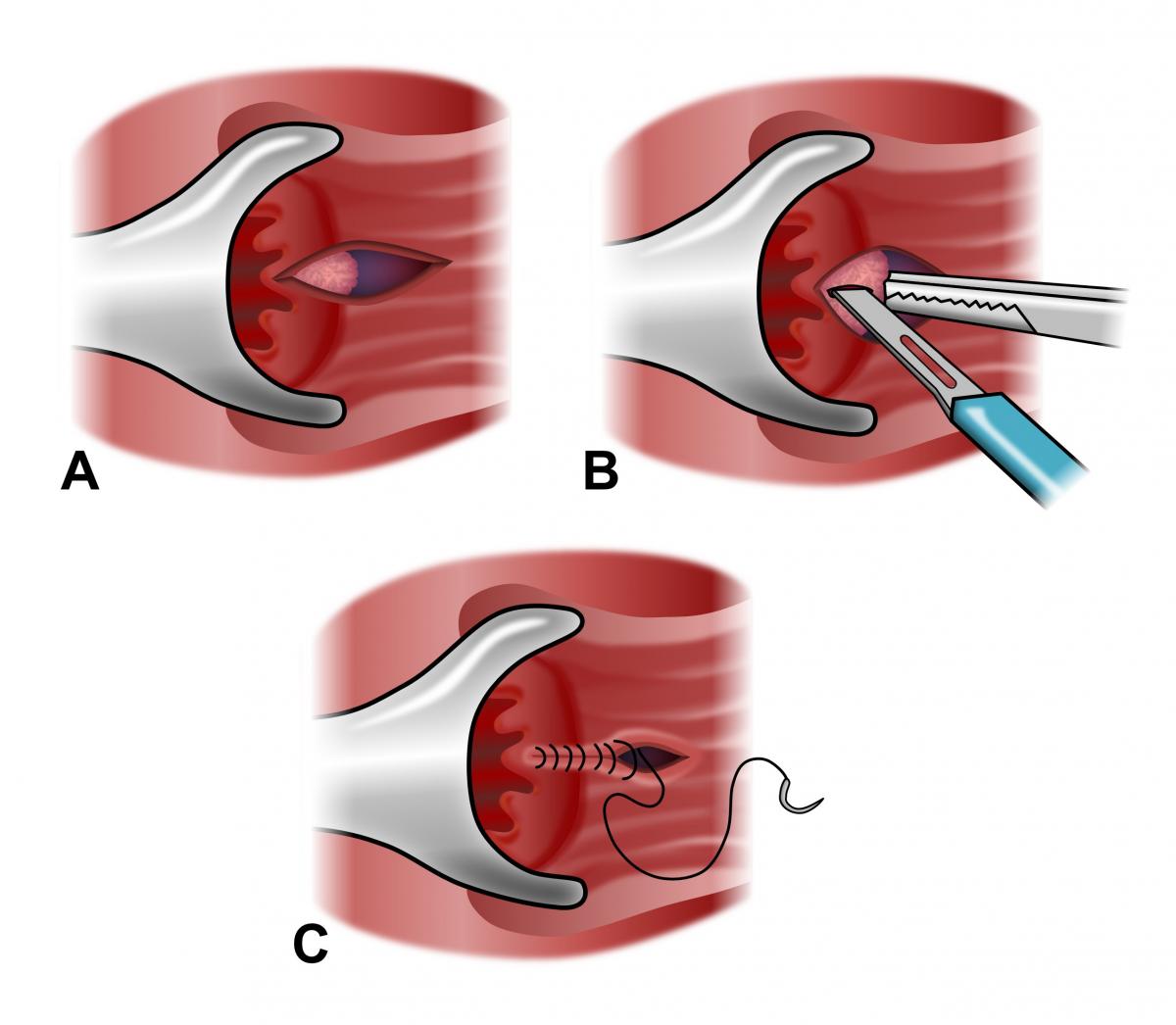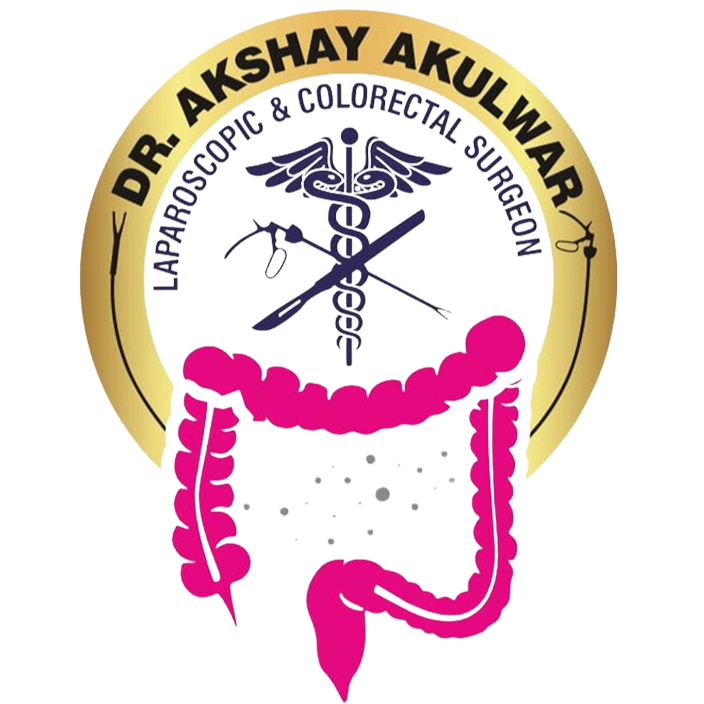Anal Fissure Treatment - Laser Surgery Procedure & Operation Benefits
What is Anal Fissure?
An anal fissure is a small tear in the lining of the anal canal. It can cause discomfort, pain, and bleeding during bowel movements.
There are two types of anal fissures: acute anal fissure and chronic anal fissure:
Acute Anal fissures are typically caused by trauma to the anal canal, such as passing a large bowel movement. It can be treated with some ointments, medications and home remedies within a few weeks.
Chronic Anal fissuresare tears that persist for more than six weeks. They are often associated with underlying conditions such as inflammatory bowel disease or sexually transmitted infections. Chronic fissures are better treated with surgery.
Treatment options for anal fissures include dietary changes, topical medications, and surgery i.e. lateral internal sphincterotomy (LIS) in severe cases.

How is Anal Fissure Diagnosed?
To diagnose an anal fissure, your doctor will typically begin by asking you about your symptoms and medical history. They may also perform a physical examination to check for any visible signs of a fissure, such as a small tear or crack in the skin around the anus.
In some cases, your doctor may need to perform a more detailed examination, such as an anoscopy, to get a closer look at the affected area.
During an anoscopy, a small, flexible tube with a camera on the end is inserted into the rectum to allow the doctor to examine the anus and rectum in more detail. This is an outpatient procedure and is performed in the doctor's clinic.
In some cases, the doctor may also recommend additional tests, such as a stool sample or blood tests, to check other possible causes of your symptoms. Once the diagnosis of the anal fissure has been confirmed, the doctor may suggest the best suitable treatment plan, which may include medications, lifestyle changes, or in severe cases, surgery.

What are the Treatment Options for Anal Fissure?
Treatment options for anal fissures vary depending on the severity of the fissure. There are two types of treatment methods for anal fissures, surgical or non-surgical.
Non-surgical approaches include dietary changes, such as increasing fiber intake and drinking more fluids to soften stools and reduce the need to strain during bowel movements. Topical medications, such as nitroglycerin ointment, can also help relax the anal sphincter and promote healing.
In more severe cases, surgery may be necessary. Procedures such as lateral internal sphincterotomy or fissurectomy can help to relieve symptoms by reducing pressure on the anal sphincter and promoting healing. It is important to consult with a healthcare provider to determine the best treatment approach for individual cases.
What are the Different Surgical Treatments for Anal Fissure?
There are two surgical approaches for anal fissure surgery.
Open Surgery
Open surgery for anal fissures is the traditional method to treat fissures. The following steps are involved in open surgery for anal fissure:
- You will be sedated under general anesthesia to ensure that you do not experience any pain or discomfort during the procedure.
- You will be positioned in a way that allows the surgeon to access the affected area easily.
- The surgeon will make an incision in the skin around the anus to gain access to the anal fissure.
- The surgeon will then analyzes the anal fissure to determine the extent of the damage and to identify any other issues that may be present.
- Then the surgeon will remove any damaged tissue around the anal fissure to allow for proper healing.
- In last, the surgeon sutures the area to close the incision made during the procedure.
- Then you will be monitored closely after the procedure to ensure that there are no complications and to manage any pain or discomfort that they may experience.

Laser Surgery
Laser-assisted surgery is the most effective treatment for chronic fissures.
The following steps are carried out during the procedure:

- You will lie on your back with your hips and knees bent and your legs apart.
- The anesthesiologist will sedate you to numb the area or put them to sleep so that you won't feel any pain or discomfort during the procedure.
- Once you are stable, the surgeon will put a laser through the anus, which is a natural opening in the body.
- The surgeon will then move the laser to the spot where the fissure (a small tear) is located.
- Using the laser, the surgeon will make a cut in the muscles around the anus. This helps to relax the sphincter muscles.
- After the surgery, you will be taken to a recovery room to rest and recover.
Laser anal fissure surgery is usually suggested for individuals in which conservative measures, such as dietary changes, stool softeners, and topical medications, have stopped working.
What are the Benefits of Laser Anal Fissure Surgery?
Here are some benefits of laser anal fissure surgery -
- Minimally invasive: Laser anal fissure surgery is a minimally invasive procedure that results in less pain and discomfort compared to traditional surgery.
- Outpatient procedure: The procedure is performed on an outpatient basis, allowing patients to return home the same day.
- Fewer complications: Anal fissure laser surgery has a lower risk of complications such as bleeding and infection compared to traditional surgery.
- Short recovery period: he recovery time for anal fissure laser surgery is typically shorter, with patients able to resume normal activities faster.
- Most Effective: Fissure laser surgery is the most effective option for chronic anal fissure treatment that has not responded to other conservative methods.
- High success rate: Fissure laser surgery offers a higher success rate than traditional surgery in preventing fissure recurrence.
- Less pain: The laser seals the nerve endings, resulting in less post-operative pain and discomfort.
- Low risk of anesthesia: The procedure can be performed under local anesthesia, reducing the risks associated with general anesthesia.
- Less scarring: Fissure laser surgery results in minimal scarring, with the incision made by the laser being smaller and more precise.
- Fewer side effects: The procedure is safe, with minimal side effects and a low risk of complications.
